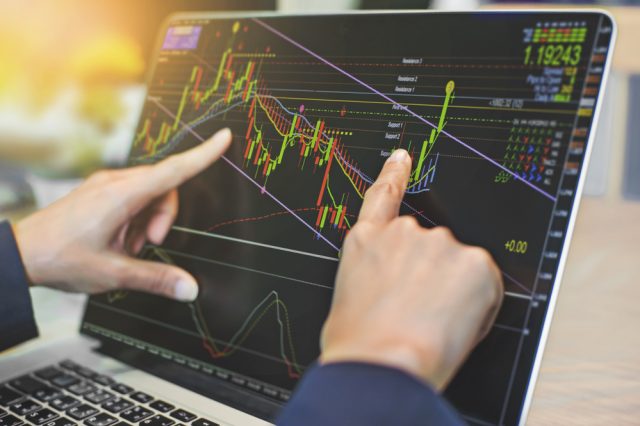The dollar has reached a two-week high. This happened today when strong and economic data led investors to thinking about the Federal Reserve. This is going to be impacted by the monetary policy meeting and it could mean very interesting things for the industry in general. The broader markets appeared to be much quieter. Traders are now way more hesitant because they don’t want to put out on large positions before the two-day meeting. The meeting is going to involve some of the EU Central Bank policymakers who are in Portugal, and then the Bank of England’s decision regarding interest rates.
The strong US retail sales that happened on Friday really did show that the reduced rates are present and that they are lifting the dollar. The FED chairman may however choose to lay down the groundwork so that a rate cut could happen later on in the year.
The expectations of a rate cut at the meeting have fallen to around 20%. The bets of a monetary easing however do appear to be high right now. The market’s pricing over the last 24 hours are now cutting from the current rate. Investors are scaling back some of their dollar-long positions according to the data that has been published by the CFTC data. That being said, analysts are not convinced about the Euro, and they are not sure that it can seize on the dollar to try and move higher. Even though this should be a softer environment for the dollar this time around, there are some EUR negatives out there and there is a high chance that this could break out later on this year. The index is going to measure against an entire basket of currencies and it has also reached a two-week high of well over 97.603.
The euro doesn’t look to have changed much. It stands at $1.1213 and investors and even policymakers are all waiting to make their decision. They are going to attend an ECB meeting which is going to be held at the Sintra in Portugal, and this is going to be done using the Euro inflation zone data. Sure, fears have protracted that a Sino and US standoff could actually tip the whole economy into recession. They have also progressed rate cuts with the prospect of being more stimulus overall.
Markets are now pricing at a very high level of probability and there is even an unusually high level of uncertainty regarding trade. That being said, it’s safe to say that there isn’t a high chance of them cutting rates if there is a post-G20, or de-escalation with China. The sterling has slid to a 2019 low and now it is at 1.2573. This is the weakest that it has been since January and investors are worried that if Boris Johnson was to replace Theresa May, this could put Britain on the long and winding path of the dreaded no-deal Brexit.



